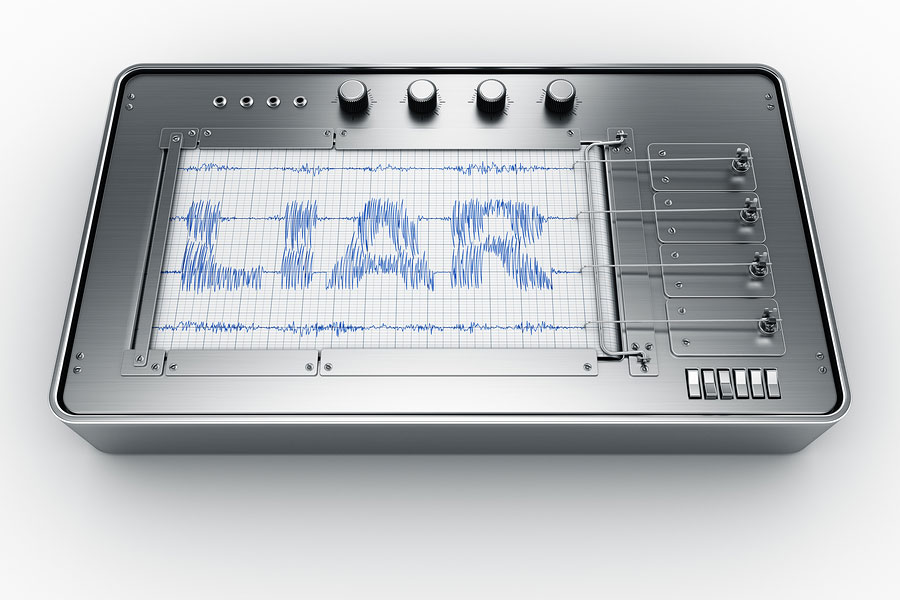Truth or false
Earlier societies utilized elaborate methods of lie detection wich mainly involved torture; for instance, the mmiddle Ages used boiling water to detect liars as it was believed honest men would withstand it better than liars.
Lie detector was invented by James Mackenzie in 1902, but then john Larson invented the modern polygraph and lie detector and it was discovered that when a person lies causes a certain amount of stress that produces involuntary physiological reactions. Several devices similar to Keeler's polygraph version included the Berkeley Psychograph, a blood pressure-pulse-respiration recorder developed by C. D. Lee in 1936 and the Darrow Behavior Research Photopolygraph, which was developed and intended solely for behavior research experiments.A device which recorded muscular activity accompanying changes in blood pressure was developed in 1945 by John E. Reid, who claimed that greater accuracy could be obtained by making these recordings simultaneously with standard blood pressure-pulse-respiration recordings.These lie detectors know when a person is lying because the heart rate accelerates, and is really useful for the police and FBI to know if is something wrong in a case or if the person is telling the truth or not.
Polygraph examiners, or polygraphers, typically begin polygraph test sessions with a pre-test interview to gain some preliminary information which will later be used to develop diagnostic questions. Then the tester will explain how the polygraph is supposed to work, emphasizing that it can detect lies and that it is important to answer truthfully. Then a "stim test" is often conducted: the subject is asked to deliberately lie and then the tester reports that he was able to detect this lie. Guilty subjects are likely to become more anxious when they are reminded of the test's validity. However, there are risks of innocent subjects being equally or more anxious than the guilty.[6] Then the actual test starts. Some of the questions asked are "irrelevant" or IR ("Is your name Fred?"), others are "diagnostic" questions, and the remainder are the "relevant questions", or RQ, that the tester is really interested in. The different types of questions alternate. The test is passed if the physiological responses to the diagnostic questions are larger than those during the relevant questions (RQ).
“People tell lies and deceive others for many reasons. Most often, lying is a defense mechanism used to avoid trouble with the law, bosses or authority figures. Sometimes, you can tell when someone's lying, but other times it may not be so easy. Polygraphs, commonly called "lie detectors," are instruments that monitor a person's physiological reactions. These instruments do not, as their nickname suggests, detect lies. They can only detect whether deceptive behavior is being displayed.” (Bonsor, 1998-2014).This tells that the results of the lie detectors; most commonly the polygraphs are not always true, but mean while it helps to discover when someone is lying and is more frequently used by the law, bosses or authority figures.
"Steve Waugh takes responsibility for an MCC proposal to allow players suspected of wrongdoing to 'prove' their innocence." (Wilson A 2010). This shows that the polygraph is very useful to prove the innocense of somenone in a crime or to show the responsability that the person had in the crime.
Lie detection has a long history in mythology and fairy tales; the polygraph has allowed modern fiction to use a device more easily seen as scientific and plausible. Notable instances of polygraph usage include uses in crime and espionage themed television shows and some daytime television talk shows, cartoons and films.
In conclusions we can see, that polygraphs are very important for a dishonest society and for the solution of juridical problems and other type of problems. Polygraphs are created to know the truth people cannot accept by themselves.
Bibliography:
Bellis M.(2014). History of the Lie Detector or Polygraph Machine. Recovered on may 26 of 2014, http://inventors.about.com/od/fstartinventions/a/forensic_2.htm.




